Where Can You Get Tested for COVID-19 in Croatia?
Last updated on August 17, 2020: Since July 11, Croatia requests that all non-EU/EEA/UK travelers present a negative PCR test results, not older than 48 hours, in order to be allowed to enter Croatia. However, if you don't have such results in time, or if you need it for any number of other reasons, you can get tested when you're in Croatia.
For more information on where to get tested internationally before coming to Croatia, please read our article. For additional answers to the most frequently asked questions, please read our FAQ article.
On July 24, the new prices for the PCR tests performed in Croatia have been confirmed, so now the PCR test for the two sequences will cost 501 kuna (around 65 €), and the price for the test looking for three sequences will be 698 kuna (around 93 €). The negative PCR test looking for the two sequences is considered sufficient by the Croatian authorities, in order to shorten their self-isolation. Not all of the local centres have adjusted their pricing scheme with this development, so in the text below please find the prices we were able to confirm.
Let's take some time to distinguish between the two types of COVID-19 tests: first is the kind which will show you if you're currently infected with the virus, and the second kind shows you whether you've had the disease in the past.
The first kind, so-called PCR test checks to see if you currently have an active SARS-CoV-2 virus in your system. It does so by taking a swab inside your nose and checking to see if there are well-researched, specific genes from the viral RNA in the sample. If they're found, it means you currently have the virus. If they're not, it means you probably don't have it (the false-negative rate is still somewhat high, for various reasons, and you might be in the earliest stages of infection when the virus still can't be detected). The test is performed mostly in state-owned institutions in Croatia, using two highly validated methods, and the cost is 500 or 700 kuna, as explained above. This is the type of test you need to show to Croatian authorities to get into Croatia without self-isolation or to shorten the self-isolation duration. Most institutions say that you should have the test results within 24 hours of when the swab was taken (what that means is that, in most cases, you will have your results early in the morning, no matter when you went to have the swab taken on the previous day).
The second kind, the serological (also referred to as immunological or antibody) test does something completely different: it analyses (most often!) your blood to see if your body has developed antibodies against SARS-CoV-2 during an infection. So what it can effectively tell you is whether you've BEEN infected, not your current status (to be fair, there are some complications to the previous sentence, but that is the briefest summary). Those tests are much less specific, not many of them have been fully validated and their results should be taken with caution. They're commercially offered by numerous private institutions, and the price tag is usually in the 150-200 kuna range (20€).
So, where can you get PCR tested in Croatia, and how? Let's take a look at the situation in major cities and tourist hubs:
ZAGREB
The Dr. Andrija Štampar (Teaching) Health Institute is the place to go to if you want to pay for your PCR COVID-19 test in Zagreb. You don't have to make an appointment of any kind, you can come every day between 8am and 4pm (8am-2pm on weekends), it's a drive-through facility (the address is Mirogojska 16, Zagreb), where you have the option to pay with cash or a credit card. They only perform the three-sequence test, and it costs 698 kuna. If you need an epidemiologist in charge, they can be reached at +385914696444 or at This email address is being protected from spambots. You need JavaScript enabled to view it., but again, you don't need to make any type of appointment with them to get tested in Zagreb.
RIJEKA
The PCR tests in Rijeka are performed by Nastavni zavod za javno zdravstvo Primorsko-Goranske Županije (Public (Teaching) Health Institute; NZJZ PGŽ). In order to get tested, you need to send an e-mail to This email address is being protected from spambots. You need JavaScript enabled to view it. with your general information (name, date of birth, address, nationality, some type of identifier number similar to a VAT number or whatever your country uses to identify you), your current contact information (mobile phone number) and an explanation as to why you feel you need the test. They will get back to you and explain the procedure to you, and you will probably get tested in a drive-in facility at Krešimirova 52 in Rijeka (their opening hours are between 8am and 8pm). If you need to call them, they can be reached at 091 125 7210.
In addition to Rijeka, and in response to the Italian requirement of mandatory testing for travelers returning from Croatia, the Public Health Institute of the County organized testing on three islands in the county: Krk, Cres and Mali Lošinj.
On Krk, the sample collection for the testing will be performed in front of the Tourist Clinic in Krk, at the address Vinogradska 2b (PLEASE do not enter the building, as the entire procedure will be performed outside), every workday between 8am and 11am. You do not need to make an appointment (unless it's a larger group), the price for the test is 698.21 kunas and you can pay in cash at the site. You will receive your results via e-mail. For inquiries and to announce a larger group needing the test, they can be contacted at This email address is being protected from spambots. You need JavaScript enabled to view it., or by phone at +385 51 221 955.
On Cres, the sample collection for the testing will be performed at the Cres department of the Public Health Institute, at the address Turion 26, Cres. You need to make an appointment, either by emailing This email address is being protected from spambots. You need JavaScript enabled to view it. or This email address is being protected from spambots. You need JavaScript enabled to view it., or you can call +385 (0)91-132-0420 or +385 (0)91-132-0421. In order to make an appointment, you will need to provide your full name, address, date of birth, and passport number. The price for the test is 698.21 kunas and you can pay in cash at the site. You will receive your results via e-mail.
On Mali Lošinj, the sample collection for the testing will be performed at the Mali Lošinj department of the Public Health Institute, at the address Dominika Skopinića 4. In order to get tested, you need to call +385 51 233 574 and make an appointment (the sampling is performed during the morning hours, on workdays). The price for the test is 698.21 kunas and you can pay in cash at the site. You will receive your results via e-mail.
PULA
In a very brief response, the County of Istria Civil Protection people told us foreigners can get tested at the Public Health Institute of Istria County, after you've made a telephone appointment with the epidemiologist at the phone number +385 (0) 995298222 or at This email address is being protected from spambots. You need JavaScript enabled to view it.. Once you call them, you'll be given all of the relevant information. Their address is Nazorova 23, and that's probably where you'll get tested, but please, call them before taking any other steps if you want to get tested in Pula. The test costs 750 kuna, and you'll have the results within a day or two since you've been swabbed. If you need accommodation in Pula or Istria, you can find it on this link.
ŠIBENIK
The PCR test is performed by the Public Health Institute of Šibenik-Knin County, in Šibenik, at the address Matije Gupca 74 (the parking of the Šibenik hospital), on Mondays, Wednesdays, and Fridays. To get tested, you need to call 0914341201 or send an email to This email address is being protected from spambots. You need JavaScript enabled to view it., with your general information (name, date of birth, address, nationality, some type of identifier number as described above), your current contact information (mobile phone number) and an explanation as to why you feel you need the test. They will contact you and explain the procedure then, and be ready to pay for the test via a bank transfer to their bank account HR8323600001101469087, routing number 00 [the number you used above as your identifier]. You will receive your test results in Croatian.
SPLIT
The PCR test is performed by the Public Health Institute of Split-Dalmatia County in Split, at the address Vukovarska 46. You need to either call them +385(0)21-401-148 to make an appointment or e-mail them at This email address is being protected from spambots. You need JavaScript enabled to view it. (from our Viber community, we received the information that they are also using the This email address is being protected from spambots. You need JavaScript enabled to view it. e-mail address). While they don't specifically say it, it will probably be easier if you include the general information mentioned elsewhere in your initial email (name, date of birth, address, nationality, some type of identifier number as described previously), and your current contact information (mobile phone number). They will be in contact with further information for you. You can pay for the test in person, either using cash or a credit card. You will receive the results within 24 hours on your email address, in both English and Croatian. When you're contacting them, mention if you're not really in Split (if you're on one of the islands, Hvar, Brač, or near Makarska) as it might be possible to give the sample there.
DUBROVNIK
If you're in Dubrovnik-Neretva County and feel like you need to get tested for COVID-19, you need to call +385 (0)99 52 91 888. An English-speaking person will answer the phone and give you detailed instructions on what you need to do in order to get tested. The samples are taken in Dubrovnik, at the address Marka Marojice bb, each morning between 8am and noon (closed on weekends), but also on Korčula and in Metković currently, so not everyone needs to go to Dubrovnik to get tested, Branko Bazdan, the director of the Dom Zdravlja Dubrovnik explained. If you need to email them, they can be reached at This email address is being protected from spambots. You need JavaScript enabled to view it.. The price of the test in Dubrovnik is 1507 kuna.
DUBROVNIK UPDATE: Marin Med Clinic in Dubrovnik (address: dr. Ante Starčevića 45, opening hours 8am - 8pm Mon-Fri, 8am - 1pm Sat) is also performing sampling for the PCR test (the test itself is not performed in house, they just take the swab and send it to get PCR'd). You need to make an appointment there as well, either at the e-mail This email address is being protected from spambots. You need JavaScript enabled to view it., or by calling +385 (0)20 400500. They need your general information (first, last name, date of birth, passport number, your e-mail address so they can send you the results), so they suggested it's probably best if you take a photo of your passport and attach that. The results are done in 24-48 hours, and the price is 3000 kuna.
I asked Zadar about their policies, but have not received their replies before publishing this article. However, Zadar seems to have a very similar set of rules as Šibenik. This article will be updated as soon as we get their replies.
The official government koronavirus.hr website also created a list of COVID-19 testing centers in Croatia, as well as the list of important contact numbers for on-duty epidemiologists. You can also find the numbers below:
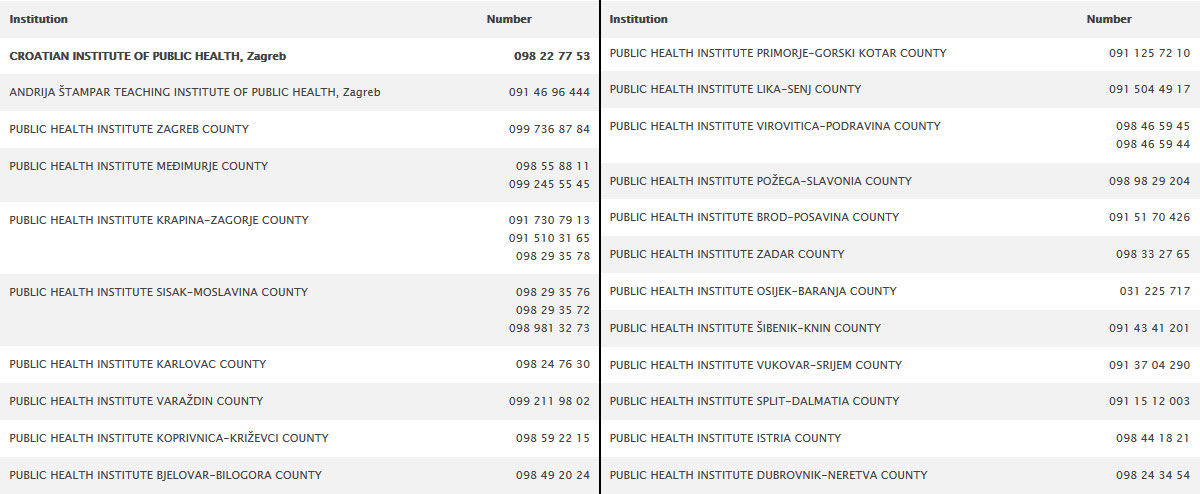
For a crowdsourced resource of the testing locations in Croatia, visit https://koronatestiranje.com/, a website created by a Croatian IT guy, Vladimir Vince, who decided he would create such a map - if the government-funded one didn't exist. He added all of the locations he could find, added the current information regarding opening hours, prices etc, as well as made it clear if the location is listed on the "official list" or not.
As for the serological tests, there is a myriad health institutions, laboratories and clinics offering different kinds of serological tests: St. Catherine Specialty Hospital (Zagreb and Zabok), Poliklinika Analiza (Zagreb, Split, Zadar and Šibenik), Medikol (Zagreb, Čakovec, Split, Rijeka and Osijek), Medico (Rijeka and Pula), Artemeda (Zagreb), Marin Med (Dubrovnik), Agram Specialty Hospital (Zagreb), Breyer (Zagreb), Poliklinika Labplus (Zagreb and Split), and I'm sure many more I wasn't able to find on Google. The test is performed by drawing some venous blood, it costs around 200 kuna and the results should be available within a couple of hours.
For the latest travel info, bookmark our main travel info article, which is updated daily.
Read the Croatian Travel Update in your language - now available in 24 languages
One in Two COVID-19 Fatalities in Croatia Has Been Care Facility Resident
ZAGREB, July 3, 2020 - Nearly half of those who have died of COVID-19 in Croatia have been residents of a care facility, the Jutarnji List daily said on Friday.
According to the Croatian Institute of Public Health (HZJZ), 50 of the 108 casualties were residents of a care facility, including 29 in Split-Dalmatia County.
These figures are not unexpected because seniors are the most at-risk population around the world and care facility residents account for 60-70% of coronavirus-related deaths in many European counties, epidemiologist Branko Kolaric was quoted as saying.
Although mortality has been highest among the elderly, HZJZ data shows that the highest number of COVID cases has been confirmed in the 50-59 age group.
In comparison with previous analyses, the new jump in coronavirus cases since June 18 shows an increase in infections in the 20-29 and 30-39 age groups. The ratio of infections among those aged 20-29 has risen from 10.8% to 12.9% and among those aged 30-39 from 13.7% to 15.1%.
The HZJZ says those aged 20-29 accounts for the highest number of about 500 recent infections in Croatia.
The number of infections in older age categories is declining, which is good as they are more at risk of developing more serious conditions and complications related to COVID-19, the newspaper said.
81 New COVID Cases, Two More Coronavirus-Related Deaths in Croatia
ZAGREB, July 2, 2020 - In the last 24 hours, there have been 81 new patients diagnosed with COVID-19 and two more COVID-elated deaths in Croatia, the COVID-19 crisis response team stated on Thursday afternoon.
Currently, the number of active COVID-19 cases stands at 647, and of them, 84 are being treated in hospitals, including three patients placed on ventilators.
Since February 25, when the first case was recorded in Croatia, there have been 2,912 cases of infection.
To date, 110 people diagnosed with COVID have died and 2,155 have recovered.
A total of 81,437 people have been tested, including 981 in the last 24 hours.
The data presented in the team's press release were collected until 1245 hours Thursday.
Croatia Confirms 52 New Coronavirus Cases
ZAGREB, June 30, 2020 - Fifty-two new coronavirus cases have been confirmed in Croatia in the last 24 hours, bringing their total to 2,777, the national coronavirus response team told a press conference on Tuesday.
"We have 52 new cases. Over 4,000 people are in self-isolation and two are on ventilators," epidemiologist Krunoslav Capak said, adding that the number of active infections is 515.
He said that 75 people infected with the novel COVID-19 virus are being treated in hospitals.
To date, 79,104 people have been tested, including 921 in the last 24 hours. A total of 2,155 infected persons have recovered and 107 have died.
After a very favourable epidemiological situation, Croatia has seen a rise in the number of cases as a result of a failure by people to adhere to the necessary measures and because of imported cases.
"We had several good weeks, after which we had a rise in the number of cases because of imported cases and failure to adhere to the measures," Capak said.
Croatia Records 67 New Coronavirus Cases
ZAGREB, June 28, 2020 - Over the past 24 hours, 67 new coronavirus infections have been recorded in Croatia, putting the number of active cases at 435, the national COVID-19 crisis management team said on Sunday.
Of the 435 active cases, 60 are hospitalised but not one patient is on a ventilator.
Since February 25, when the first case was recorded in Croatia, 2,691 persons have been infected with the novel coronavirus, 107 of whom have died, while 2,152 have recovered.
Currently, 2,279 persons are self-isolating.
To date, 77,453 persons have been tested, including 829 over the past 24 hours.
PM Plenkovic Says Doesn't See Any reason to Get Tested Again
ZAGREB, June 26, 2020 - Prime Minister and HDZ party leader Andrej Plenkovic said on Friday that at the moment he did not see any reason to get tested for the coronavirus again and that he usually consulted with experts on such matters.
"I am not a 'do it yourself' person when it comes to medical consultations, I have a habit of consulting with experts. That is what the Scientific Council is for. If they suggest that I do so, I will consider doing that. At the moment, I don't see any reason for it," he said during a visit to Koprivnica when asked by reporters if he planned to get tested for the coronavirus again.
Asked what would happen if it eventually turned out that he, too, was positive for COVID-19 after all the contacts he had at the recent Adria Tour tennis tournament in Zadar, he said that there was no need for him to answer hypothetical questions.
Croatia Reports 56 New Cases of COVID-19
ZAGREB, June 26, 2020 - Croatia has confirmed 56 new cases of the coronavirus and currently, the total number of people infected since the outbreak stands at 2,539, the national COVID-19 response team said on Friday.
"Fifty-six new cases have been identified in the past 24 hours, which means that 2,539 people have been infected with the coronavirus," deputy director of the Croatian Institute for Public Health (HZJZ) Marija Bubas told a press conference.
There are 23 new cases in Zagreb, 12 in Osijek-Baranja County, 5 each in Primorje-Gorski Kotar, Split-Dalmatia, and Zagreb counties, 2 each in Zadar and Koprivnica-Krizevci counties and 1 each in Brod-Posavina and Varazdin counties.
A total of 75,437 sample tests have been taken, including 780 in the past 24 hours. 51 patients are being treated in hospitals however there aren't any patients connected to ventilators.
To date, 2,150 people have recovered from the virus while the death toll stands at 107.
Where Will Croats Go After the Measures are Eased?
May 10, 2020 - While we were patiently waiting for the measures to be eased, we asked Croats about their plans on the first day with a bit more freedom.
After almost two months of strict measures that limited our freedom of leaving our homes or the county, today there was a decision to eliminate e-passes, except for Brač, where, according to the decision, there is still ban on movement and gathering. Thus, on Brač, the measures from before April 27 are applied. Here is the link about the situation on Brač.
We asked Croats how they are planning to spend the very first day with new, eased measures and gathered 311 responses.
The first statement was, "I'll go to the cafe for coffee," and surprisingly, for a nation who loves enjoying the sun on the terrace while drinking coffee with friends, just 52,2% said yes.
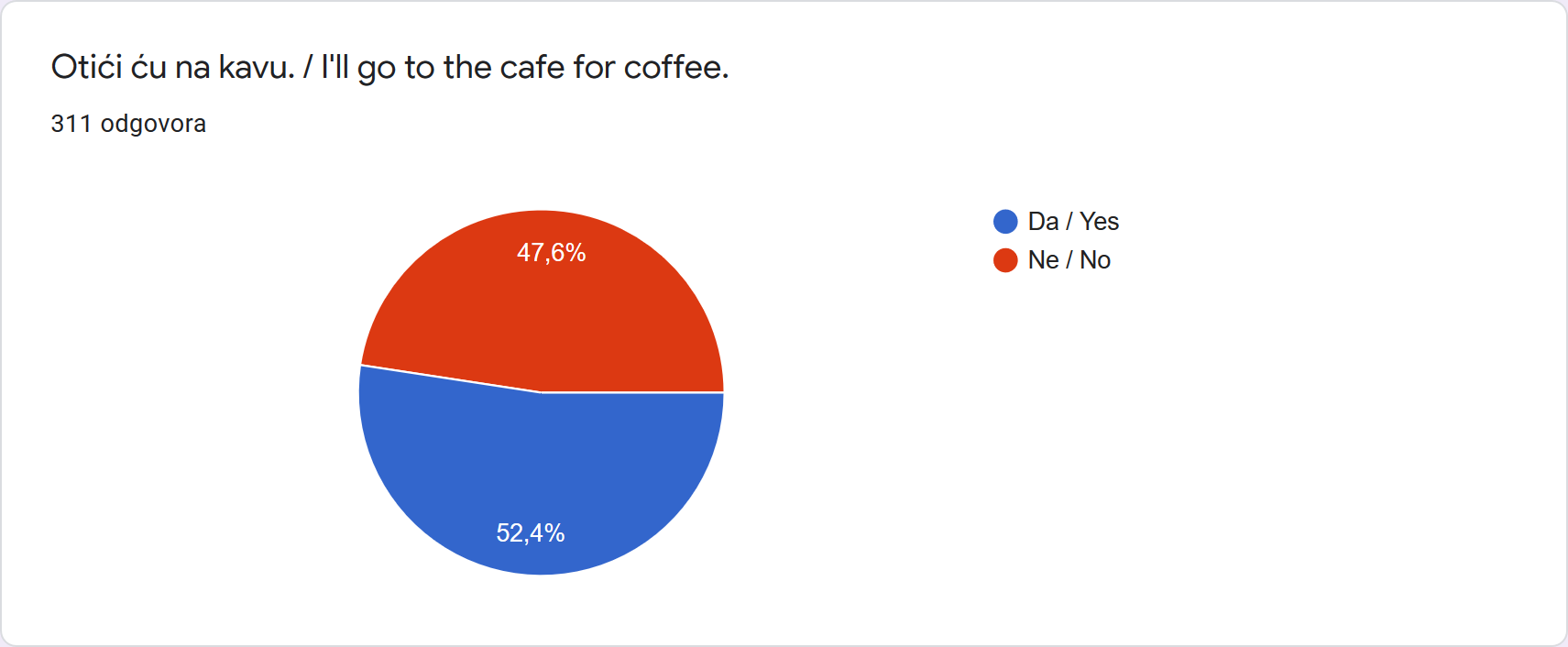
They are even less ready to leave their county, with a total of 55% negative answers.
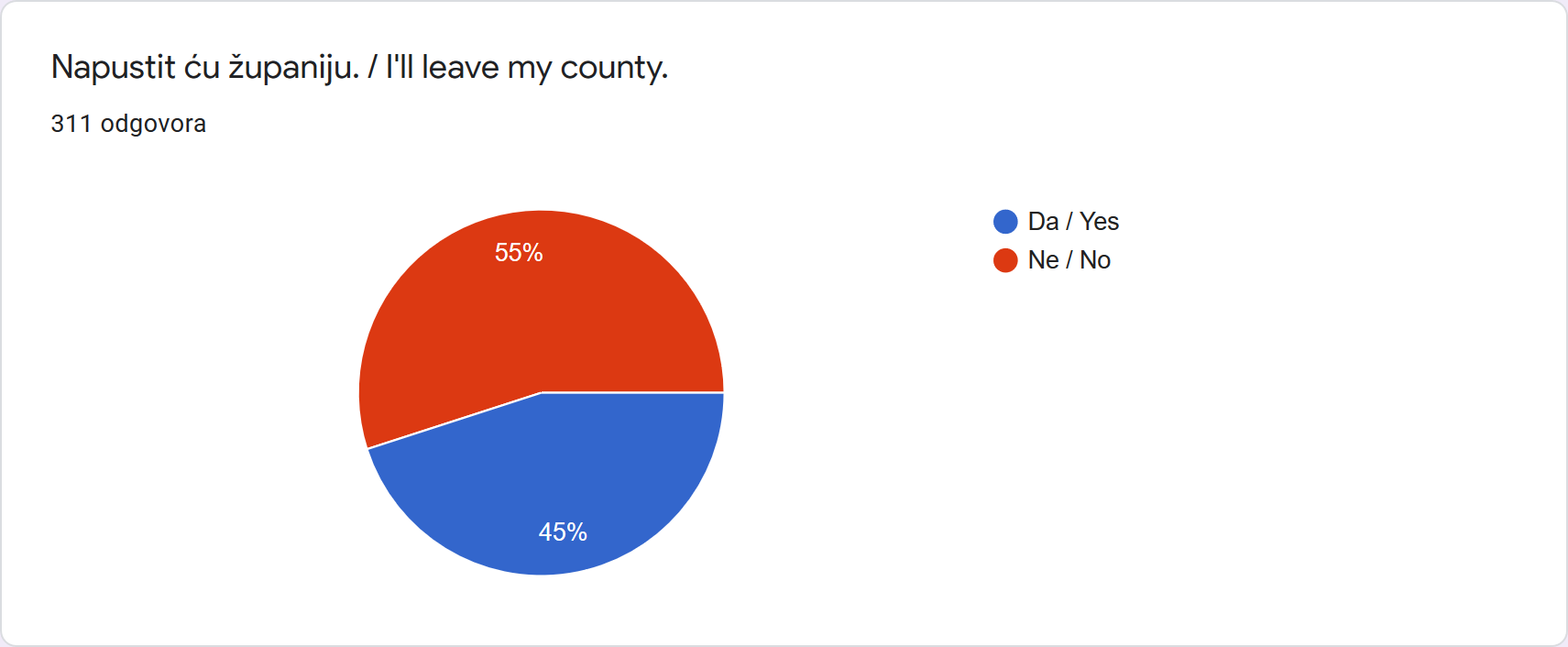
But, when it comes to visiting friends, here, the "yes" answer confidently wins with a total of 71,4%.
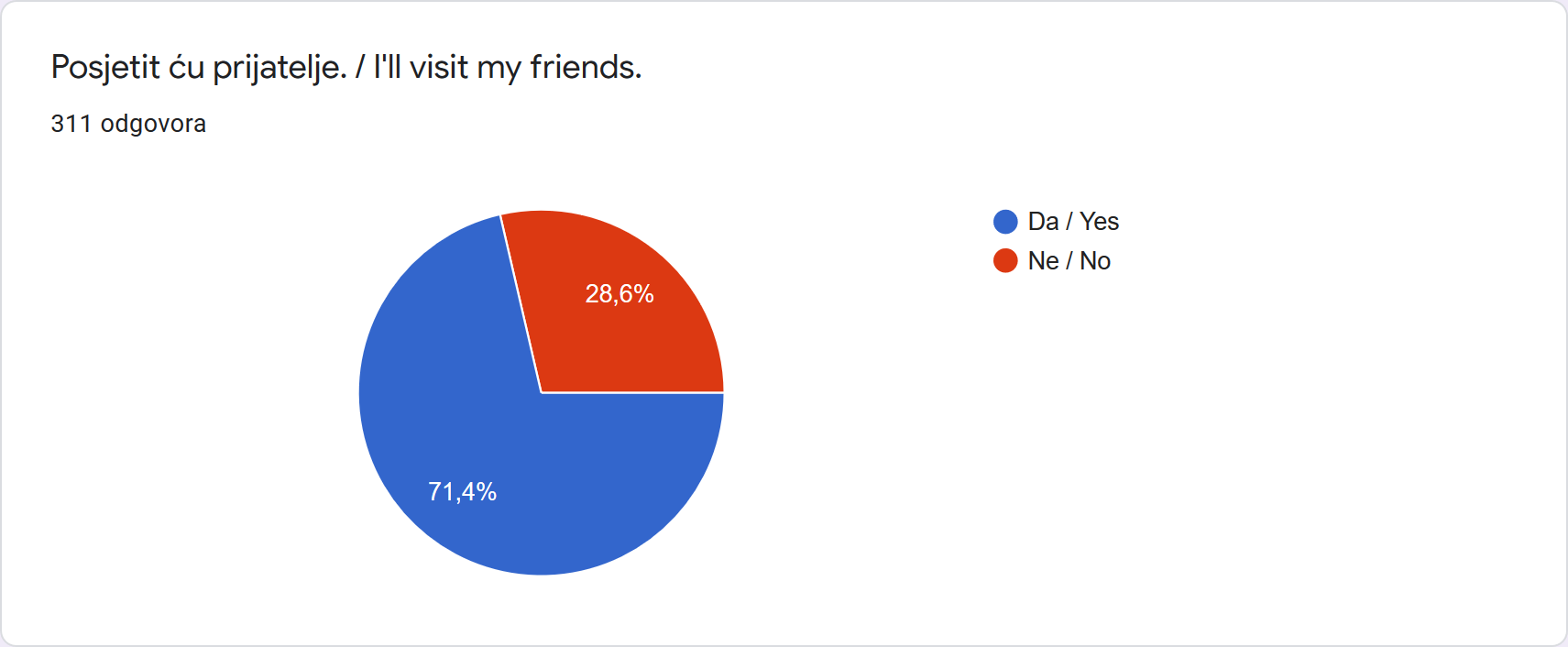
The caution when it comes to shopping is still here - 70,4% of people said they wouldn't go to shopping centers.
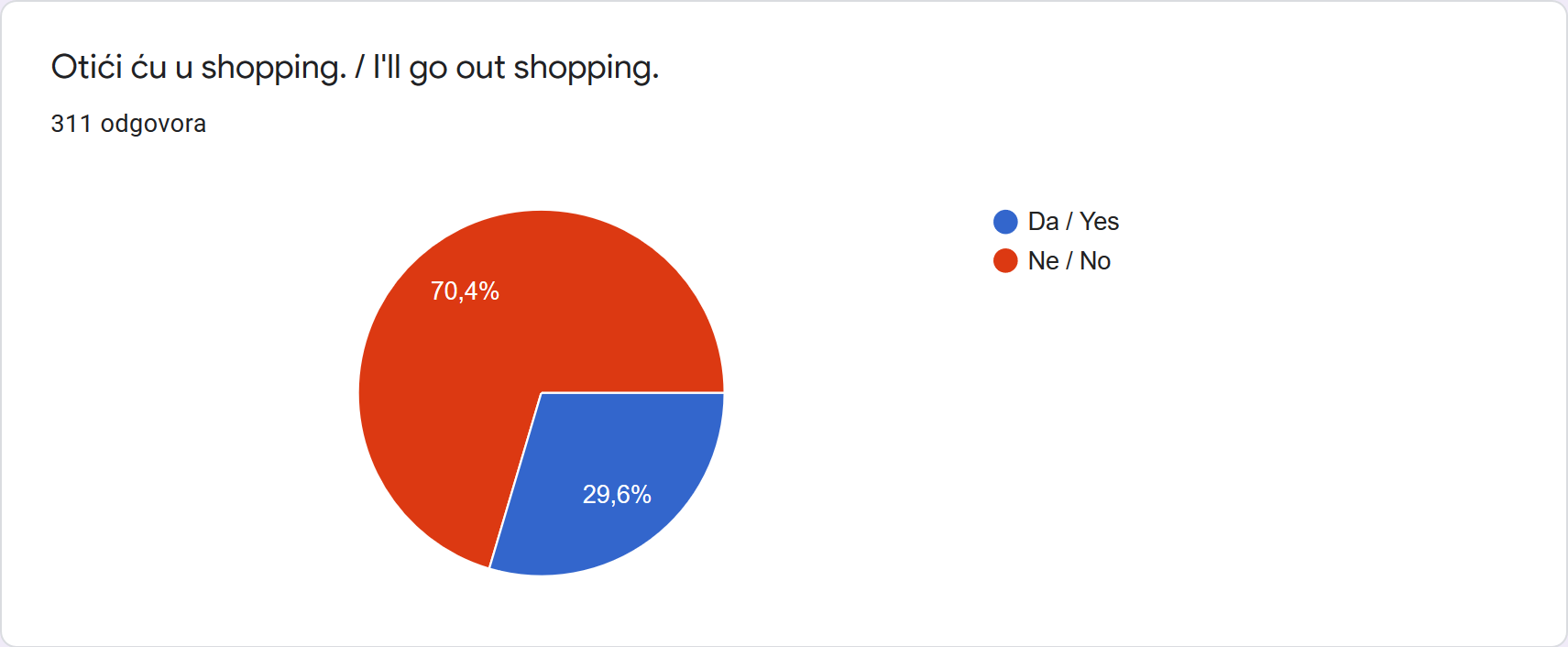
A little less than half of the people answered that they wouldn't stay home, which, after almost two months without that luxury, is understandable.
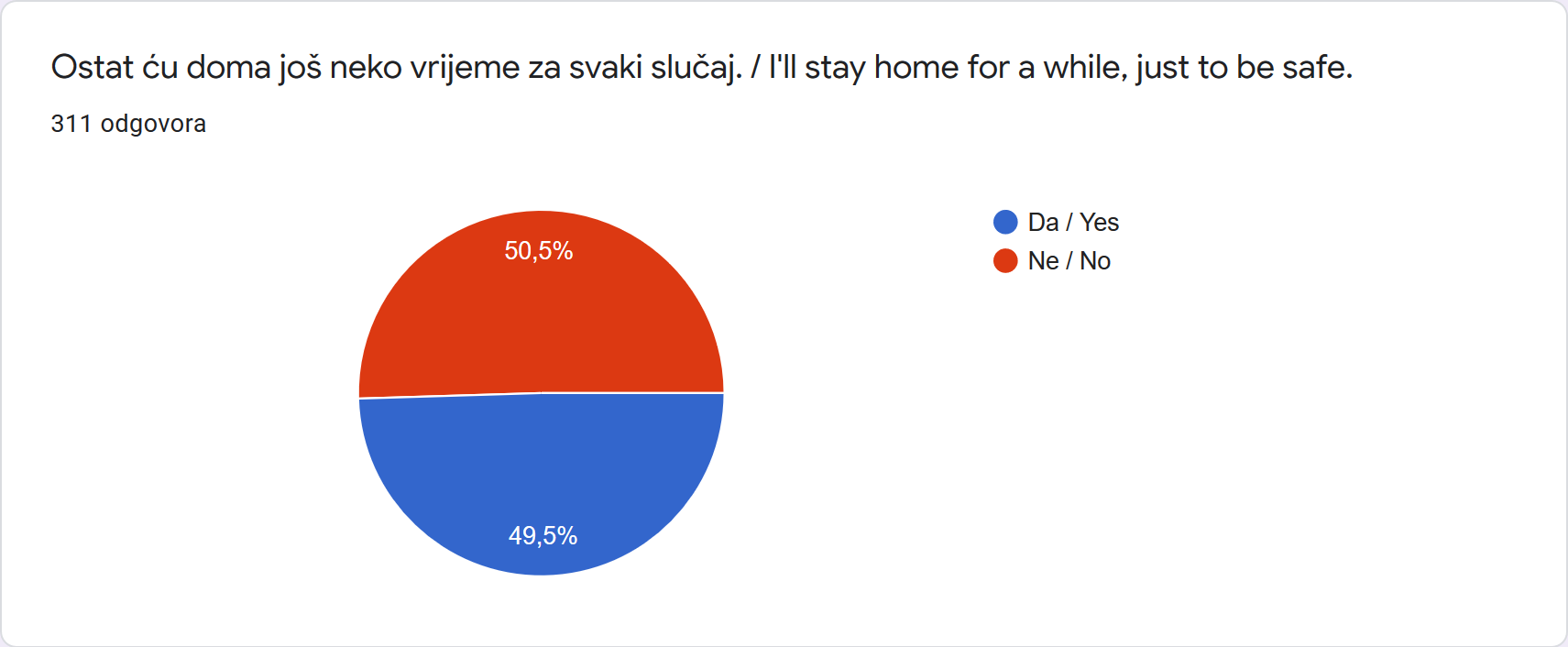
In the last statement, Croats showed responsibility once more - a total of 82,3% of people steal the show.
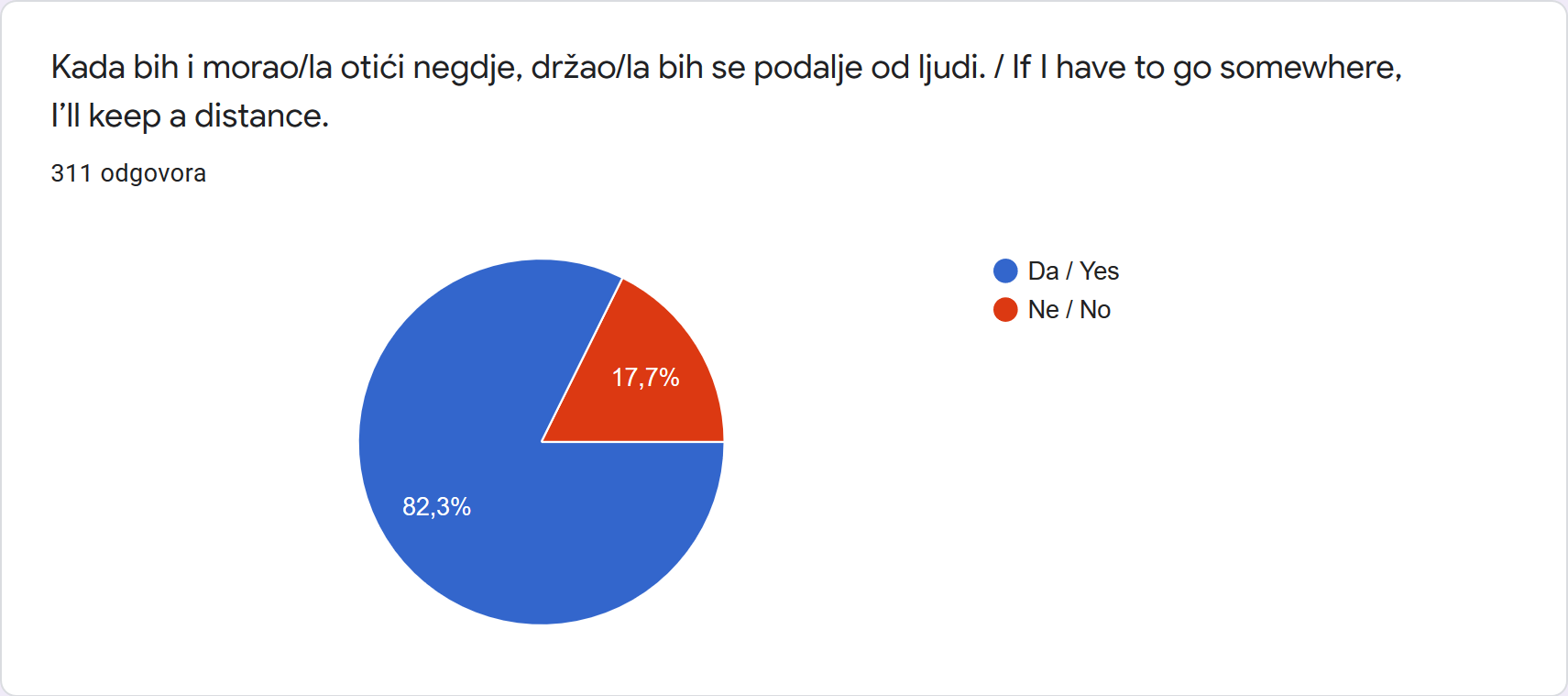
A little reminder for everyone: from tomorrow, gatherings of 40 people will be allowed, and e-passes are eliminated. Still, we are called to act responsibly.
Follow our live updates on the coronavirus crisis in Croatia.
Market vs. Social Distance? Đurđevac says: Market With Social Distance!
May 8, 2020 - Markets are sources for many people when it comes to fresh vegetables, fruits, milk, cheese, and much more. So, how is the market in Đurđevac coping in the second week of reopening?
Visiting markets is a part of the weekly, maybe even daily routine for a large number of people. While many markets needed to close their gates due to measures, people were left not only without fresh food but maybe without the familiar faces of their favorite sellers.
The market in Đurđevac used to be open every Thursday, and as one of the locals said: "This must have been difficult for them during this period of the pandemic, especially because the beginning of spring brings many more customers that buy plants for their personal gardens."
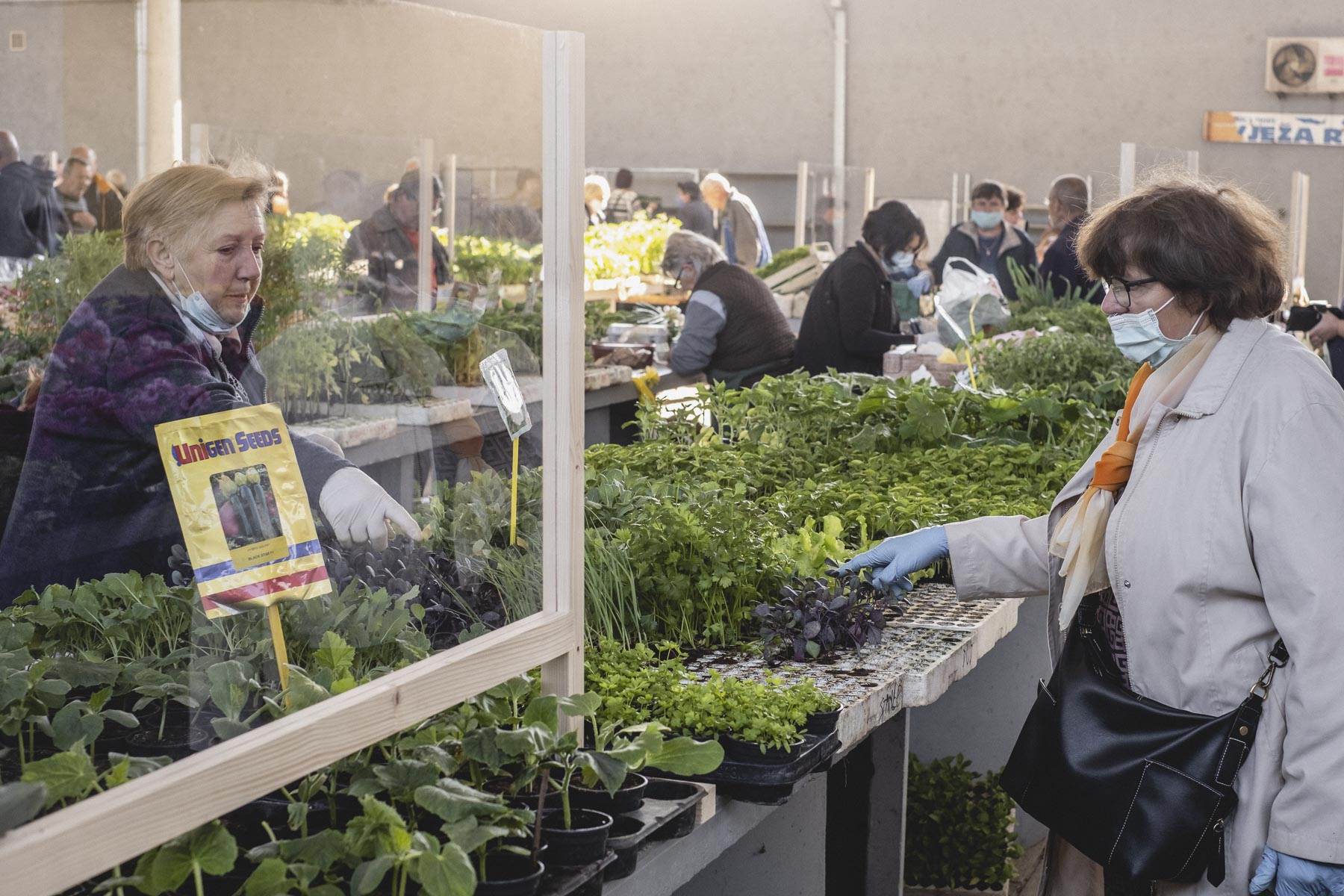
Joubert Loots visited the market in Đurđevac and told us information about every measure this market took. Besides the fact they had dedicated entry and exit points, the number of people inside was monitored - just like in every other store lately.
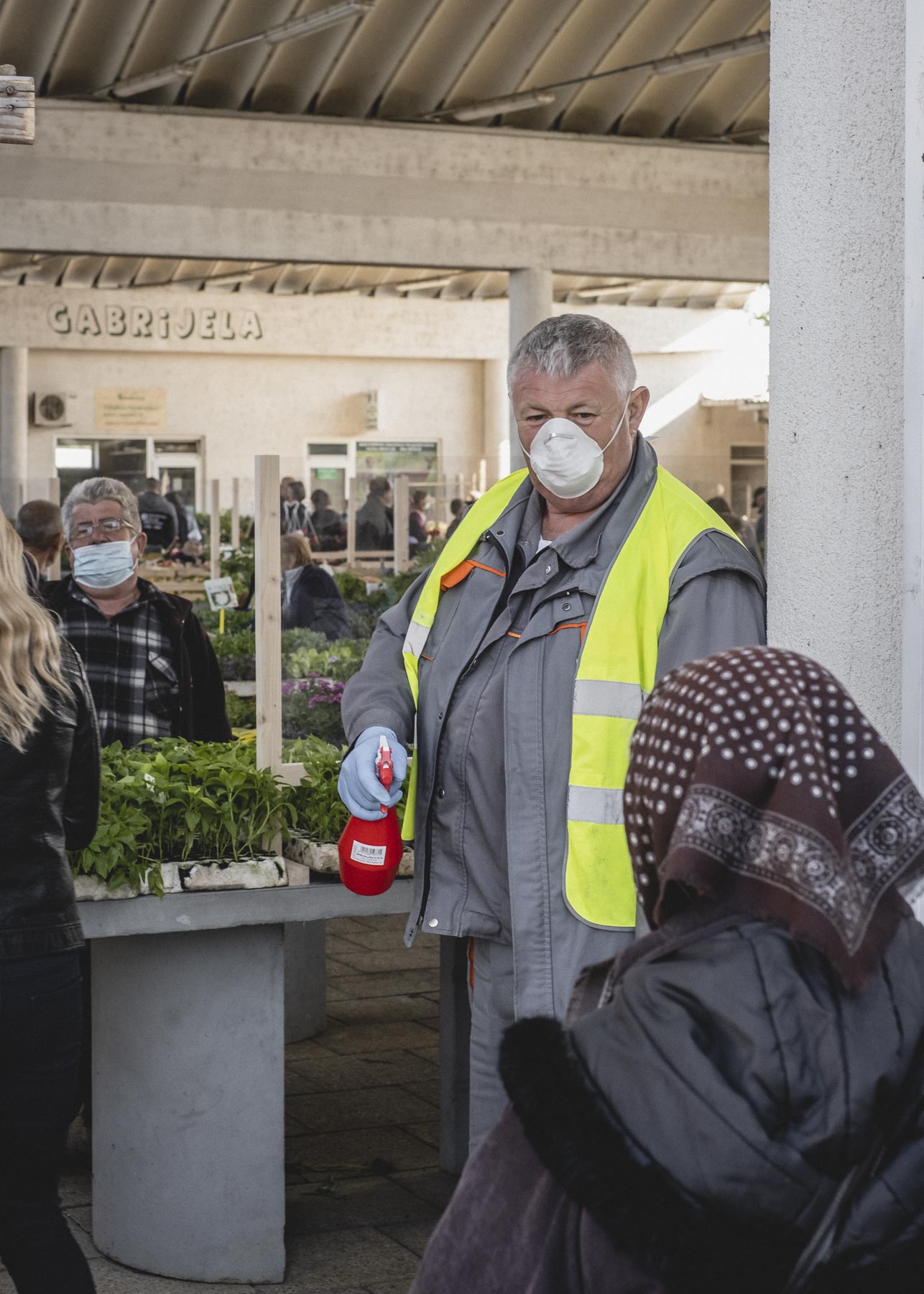
Most of the stalls had sneeze guards installed for added safety so you can sanitize your hands on every corner.
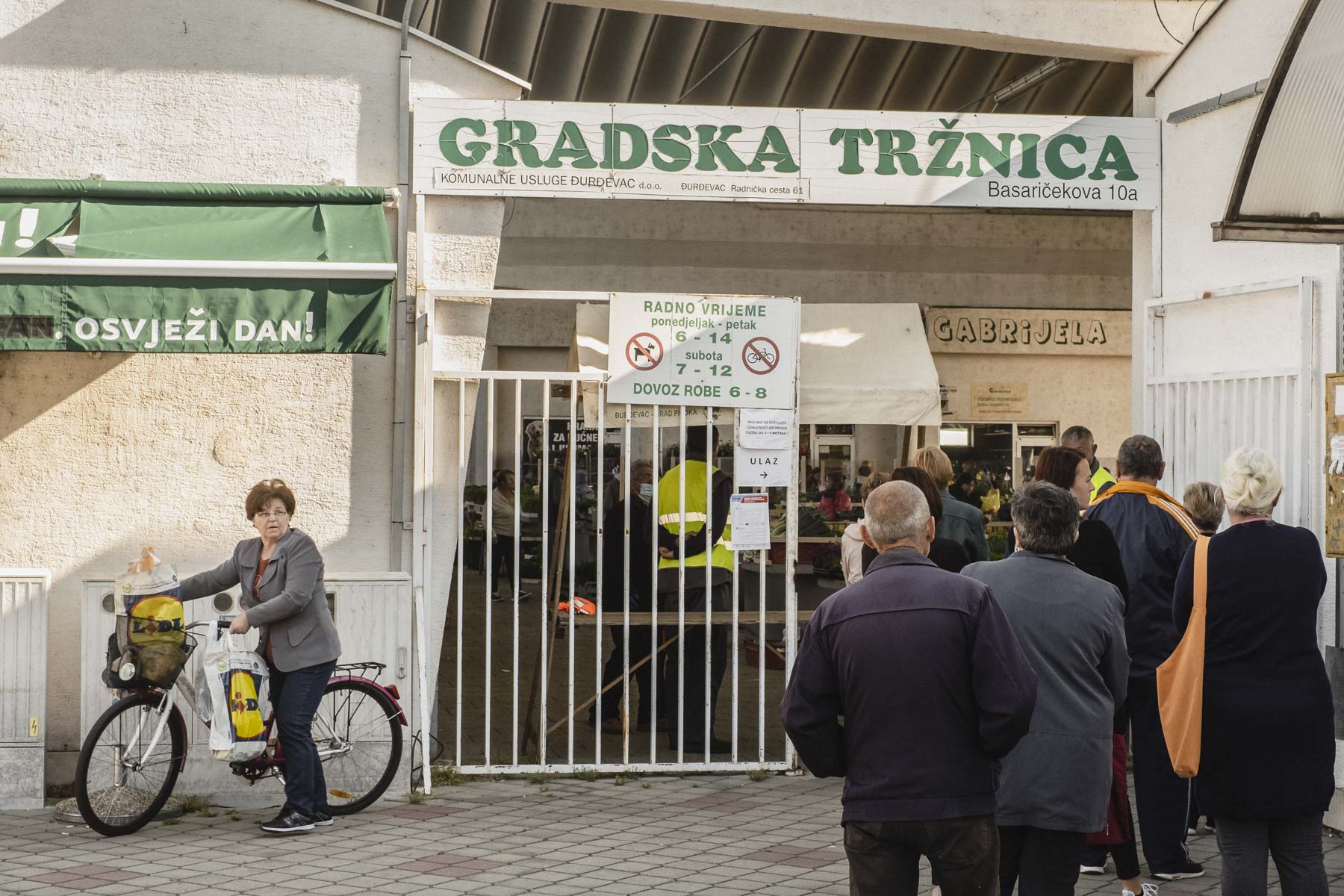
Maybe one of the best indicators that people from Đurđevac were missing their market was a long queue outside the market area.
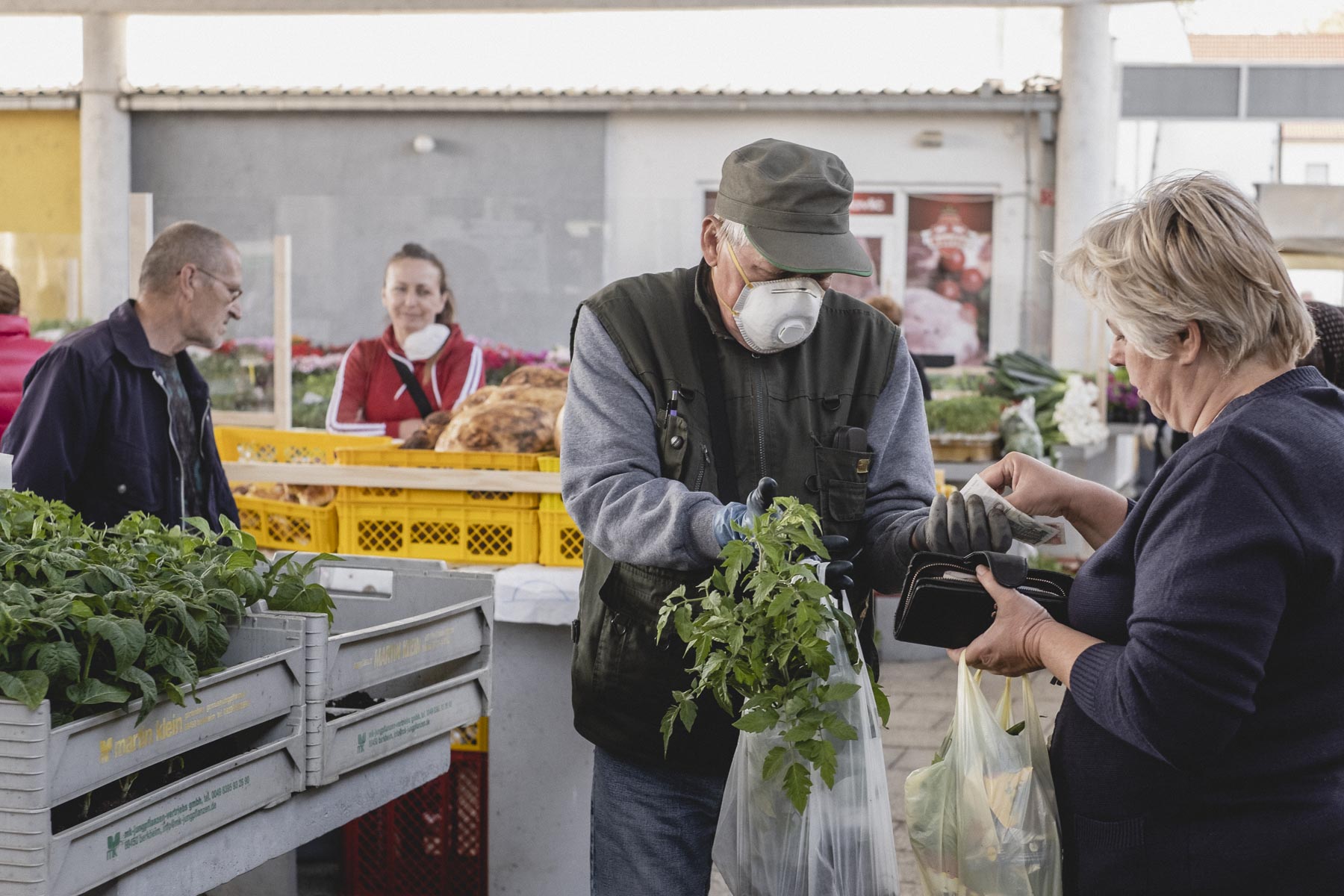
Although most people are still equipped with masks, gloves, and sellers with a partition between them and customers, life is slowly returning to normal.
Many thanks to Joubert for the submission. You can check out his portfolio of photography here.
Are you a small business in Croatia, which has just reopened after the recent lockdown? TCN is happy to support local businesses promoting their stories. If you are interested, please send photos, your experience, and your website to This email address is being protected from spambots. You need JavaScript enabled to view it. Subject Small Business.
For the latest news on COVID-19 in Croatia, follow the dedicated TCN section.
Analysis: Coronavirus in Croatia Compared to Other European Countries — April 27 Update
April 30, 2020 — A graph showing the number of deaths from or with the SARS-CoV-2 virus per million of the population places Croatia among the five best-ranked countries with the lowest proportional death toll, according to the Johns Hopkins University Coronavirus Database.
In addition to Croatia, there are Greece, Poland, Bulgaria, and - according to the available data - Slovakia. The next low-mortality group includes the Czech Republic, Hungary, Finland, Romania, Estonia, Norway, and Slovenia, with the worst situation affecting Belgium, Spain, Italy, and France. Sweden has around 16 times the death toll per million inhabitants compared to Croatia, a comparison mentioned often due to its lack of measures.
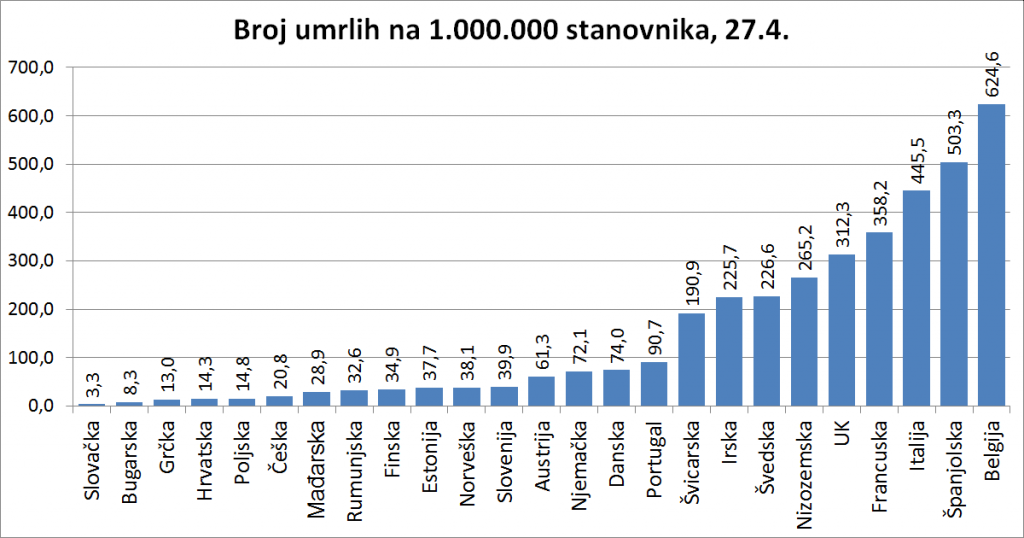
Specifying only the absolute numbers of registered infected persons or persons who died from or with the presence of COVID-19 per country does not give a true picture of the situation, given that there are huge differences in the population of individual states. In this way, for example, the terrible situation in Belgium, with its 11.5 million inhabitants in absolute numbers (7,207), has seemingly far fewer casualties than, for example, Italy with its 60,5 million inhabitants (26,977) for a long time.
It can also be said that Germany, with 6,021 deaths, has far more casualties than 2,274 in Sweden, which is not really the case at all. On the contrary, Germany with 83.5 million inhabitants is significantly more successful in fighting the epidemic so far than Sweden with 10 million inhabitants.
Likewise, it is difficult to compare the development of an epidemic by country in parallel if one looks at the number of registered infected persons on the same date, regardless of the outbreak of the epidemic in each country. The following figure shows the movement of the number of registered patients in several European countries on the same dates.
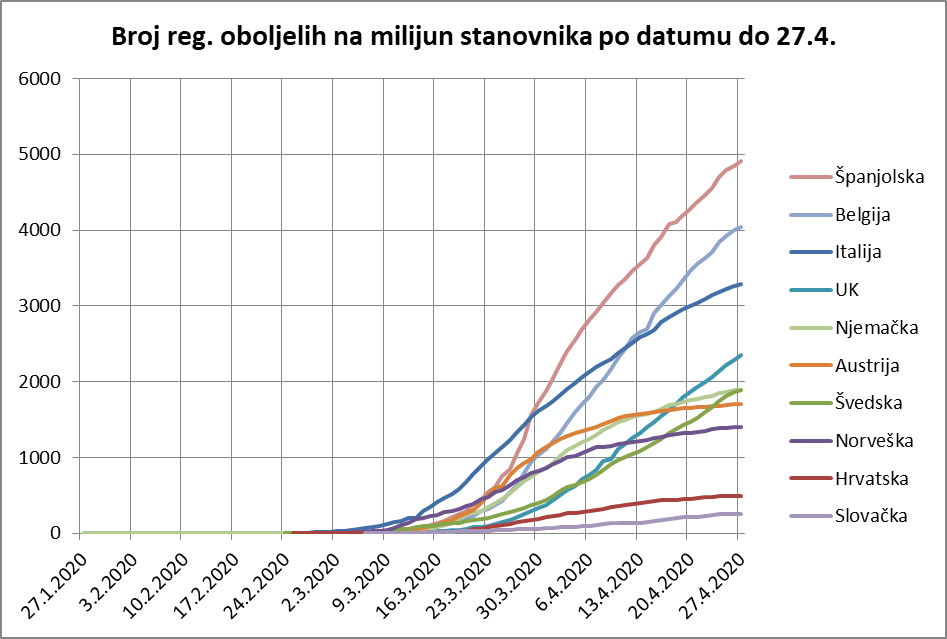
The graph shows a comparison of the currently registered sick per million inhabitants, but it is even more important to note the slopes of each curve in the last week or 14 days. The slope speaks to the rate of spread of the epidemic, of course, as much as there are registered patients.
We do not know the number of unregistered infected persons. It can be seen that Slovakia and Croatia have excellent control over the epidemic; that Norway, Austria, and even Germany have successfully reconciled the earlier spread of the infection, that Italy is slowing down its situation. Spain is having more difficulties, that Belgium and the UK are in a linear curve phase, and it seems that Sweden also achieved a linear curve, although it "overtook" Norway and Austria and "overtook" Germany.
However, here we also provide an overview that begins for each country from the date the first infected person was registered. In this way, it is possible to compare the development and effects of epidemic suppression both in dynamics and in relative numbers per million inhabitants.
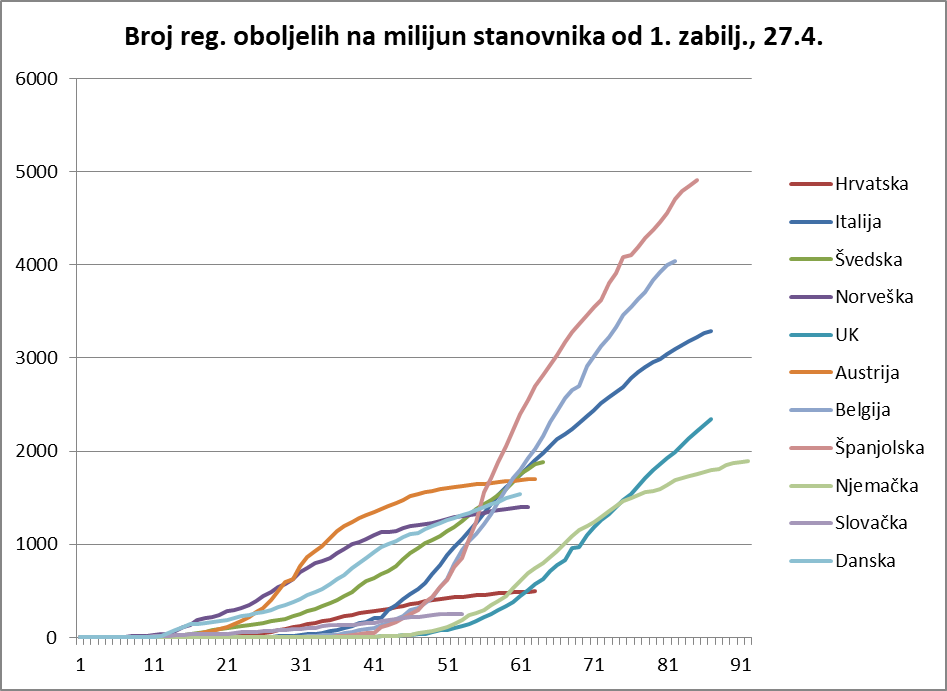
This chart does not show all the countries that are in the first, not only because such a view would become completely opaque, but also because of the abundance of data that needs to be monitored.
At first glance, two groups stand out. The left group is one in which the epidemic developed relatively quickly after the first registered infected person in terms of population: Austria, Norway, Denmark, Sweden, Croatia, and Slovakia. Of course, these are smaller countries. The right group is one in which more time has elapsed since the first registration of the infected person, and these are countries with a larger population.
In the first group, there was a rapid increase in the number of people infected in Austria, but also a very rapid response that reversed the epidemic as early as the 32nd day, and even without "leveling", a consistent reduction in the number of new patients was immediately achieved. The epidemic has calmed down after about 50 days in that country, which of course has a great impact on deciding what to do next.
The epidemic in Norway, with an even sharper start, had a similar course, but apparently by the rapid reaction of the authorities, who reversed the trend around the 32nd day as well and achieved a calming around the 45th day.
In Denmark, the epidemic started very much like in Norway, with the first leveling off happening faster, but with more rapid growth again. Currently, the curve is linear.
The same group is followed by Sweden, which initially did not have rapid growth but, by the 55th day, has grown in the number of registered infected persons Denmark, Norway, and Austria, and there is no sign of the infection slowing.
Viewed in this chart, Croatia and Slovakia are maintaining a linear curve almost from the start of their epidemics. They maintain a very low slope linear curve and have the lowest number of registered infected persons per million inhabitants.
The group of larger countries shows that the worst situation is in Spain, which after exponential growth until the 56th day of the epidemic in its territory and then from around the 62nd day a slightly milder but still large slope with no indication that the epidemic would soon begin to subside.
It is similar in Belgium, which straightened the curve around the 54th day but has since maintained a steady but high (relative) increase in newborns with no indication of calm.
Italy, whose exponential curve started about a week before the one in Spain, reached a more moderate slope of the linear part of the curve around day 49 and shows a slight calming of the epidemic.
Germany, with some time lag compared to the first registered infected person, achieved a curve similar to Austria, with a trend reversal around day 68.
After exponential growth, the UK was able to straighten the curve around day 70, but with no indication of calm.
Looking closer to Sweden, we can see a form of exponential growth in the number of infected.
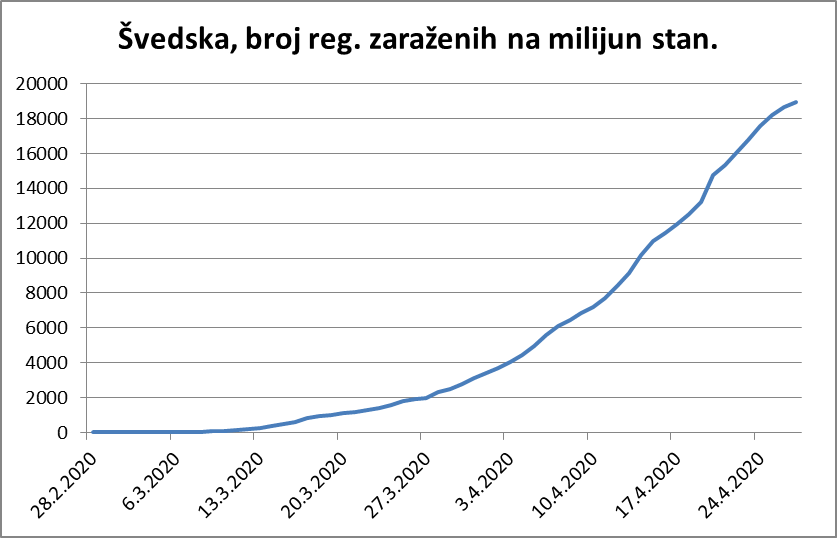
If we take a closer look at Croatia, we will see that linear growth has already been achieved around March 22 (just after the earthquake in Zagreb), that an even better slope was achieved after April 1, and that from April 16 we can speak of a calming epidemic.
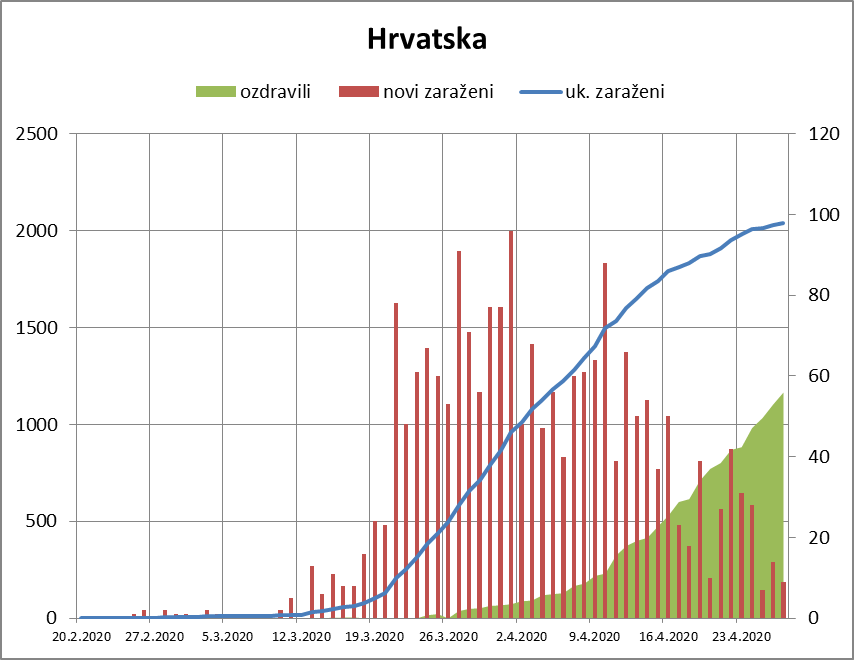
Croatia's excellent result can also be seen in the chart showing the trend in the number of sick and dead.
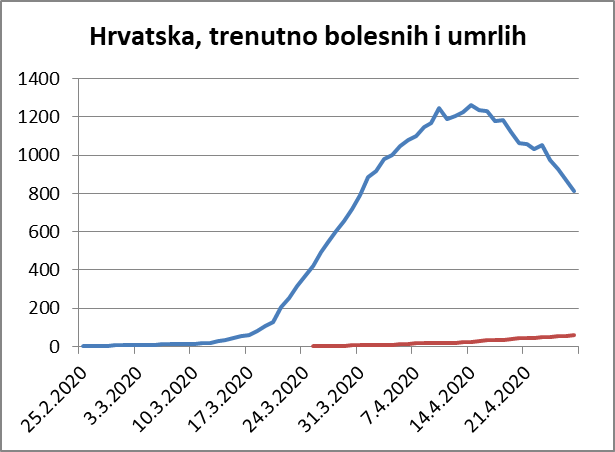
These topics often raise the question of what is a good test measure and whether we are testing enough. An excellent graphical representation of the testing ratio per million population and the percentage of positives shows who optimally tests and who does not. If you are about 10% positive you have found a good measure - Croatia is. Something ugly is coming to Brazil, only if the good weather saves them.
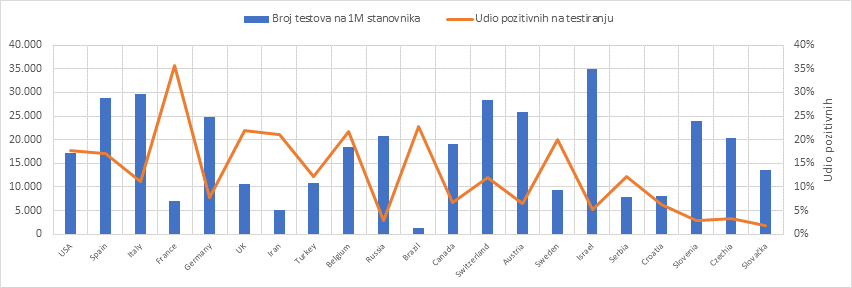
From everything I think it can be concluded how useful it is when policies are established on the basis of scientific knowledge and data. Scientific knowledge, in comparison to the usual political ones, is neither conservative nor radical; they are simply as they are and should be trusted. But these lessons are not exclusively health, but equally political, especially when we talk about loosening up on measures.
Of course, every state can be asked what its long-term prospect is in these new circumstances. That will not go away. Some countries, which have curbed the epidemic in the sense that they have ensured that their health care system can control the situation, maybe far more comfortable developing a further strategy than those who still have to put all their efforts into maintaining the health system's functionality.
And finally - is coronavirus more dangerous than the flu? Yes, but as far as we may know, in just a few months, we learn something new every day. The important difference is that we do not have vaccines and that the virus can mutate more often in a large number of patients.
Find more good visualizations of a pandemic at Croatia Mireo and Velebit.ai.


